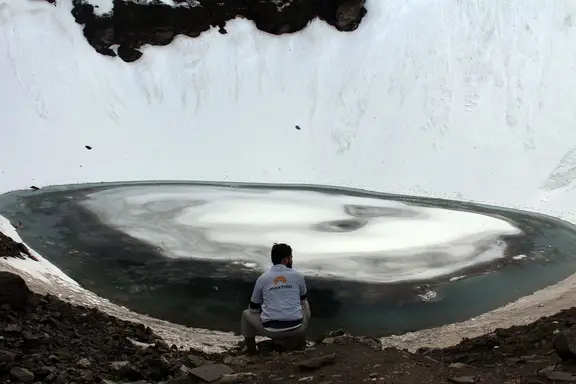Trekking in Manali: 10 Best Treks in Manali- 2024
To Trek in Manali is a Wondrous Miracle to Behold
One of the most stellar destinations that offer unbeatable trekking trails for the adventurous souls and nature lovers, Himachal Pradesh is truly a haven for trekking enthusiasts. As they say, “the wealth of nature is best savored when touched and sensed”, one has to experience the thrill, embrace the challenge, enjoy the air and behold the view to soak in the soul of this beautiful bounty of nature!

Close your eyes and think about Manali, India-you are transported to a dreamy fairyland-the beauty of the place leaves you speechless and then turns you into a storyteller! Manali, the beautiful high-altitude resort town nestled in the laps of Himalayan mountains of Himachal Pradesh is India’s epic answer to the European iconic retreats. Touted as the honeymoon destination with sylvan surroundings as well as a hub for thrill-packed adventure, Manali offers myriad activities like skiing, zorbing, parachuting, paragliding, biking, jeep safari, and river rafting to catapult your expedition to the next level.
All this plus an amazing topography of the region offers exciting opportunities for trekking in Manali. Your trip to this wonderland is incomplete without experiencing the thrill of Manali trekking with multitude of Manali trekking packages. The place has often been dubbed as the trekker’s paradise. All round the year, adventure junkies pack their backpacks and take a trip to Manali to be welcomed by its exquisite environs that are just so perfect.
Trekking in Manali has come a long way as most of the popular treks of Himachal Pradesh originate from the Manali region. It is well-connected to most big cities of the country through road, train, and flight. With a multitude of trekking locales available, you can pick the one depending upon your choice of location and trek level. These trekking destinations offer an overwhelming experience-with every walk with nature you will receive more than you seek!
There are some common elements to these treks in Manali as you traverse through the beautifully diverse Himalayan terrain, small idyllic villages and are treated to the most exotic flora and fauna of Himachal Pradesh. However, each of these treks is steeped in mythology/folklore with certain highlights that are exclusive to that trek alone.
MYTHOLOGY SURROUNDING MANALI, INDIA
Manali was named after Manu, a Santan lawgiver. Manali is said to be a derivation of Manu-Alaya, which means Manu's residence. Manu is said to have halted at Manali to rebuild human life after a great flood swamped the earth, according to Hindu mythology. Manali is a beautiful city tucked away in the Kullu Valley, which is known as the "Valley of the Gods." A historic temple attributed to the guru Manu may be seen in the town's native village.
Let's take a quick look at the 10 most popular destinations for trekking in Manali
1. Beas Kund Trek

An ideal 3-day weekend trek in Manali, with a total distance of 16 kms takes you to the source of the effervescent Beas river and touches an altitude of 12,772 feet. Walking towards the origin of the Beas river while experiencing the beauty of the region in its glorious best is a perfect gift for an adventurous soul.
The trek can be extended to 5 to 6 days if one wishes to explore further.
Also known as Vyasa Kund trek, the base point of the trek is the Solang valley, located at a distance of 13 kms from Manali. Dotted with vast grasslands, small rivulets, coniferous forests, and scenic campsites, Beas Kund trek treats you to the panoramic views of Deo Tibba, Hanuman Tibba, Dhundhi, Indrasen Peak and Pir Panjal range. The easy to moderate trekking trail of the trek makes it a big hit among amateurs as well as the professionals.
The best part of the trek is the Beas Kund lake located at the summit of the trek. According to the legend, sage Vyas meditated on the banks of this lake and wrote the epic Mahabharata.
The best months to undertake the Beas Kund Trek are Mid-May to Mid- October.
2. Bhrigu Lake Trek
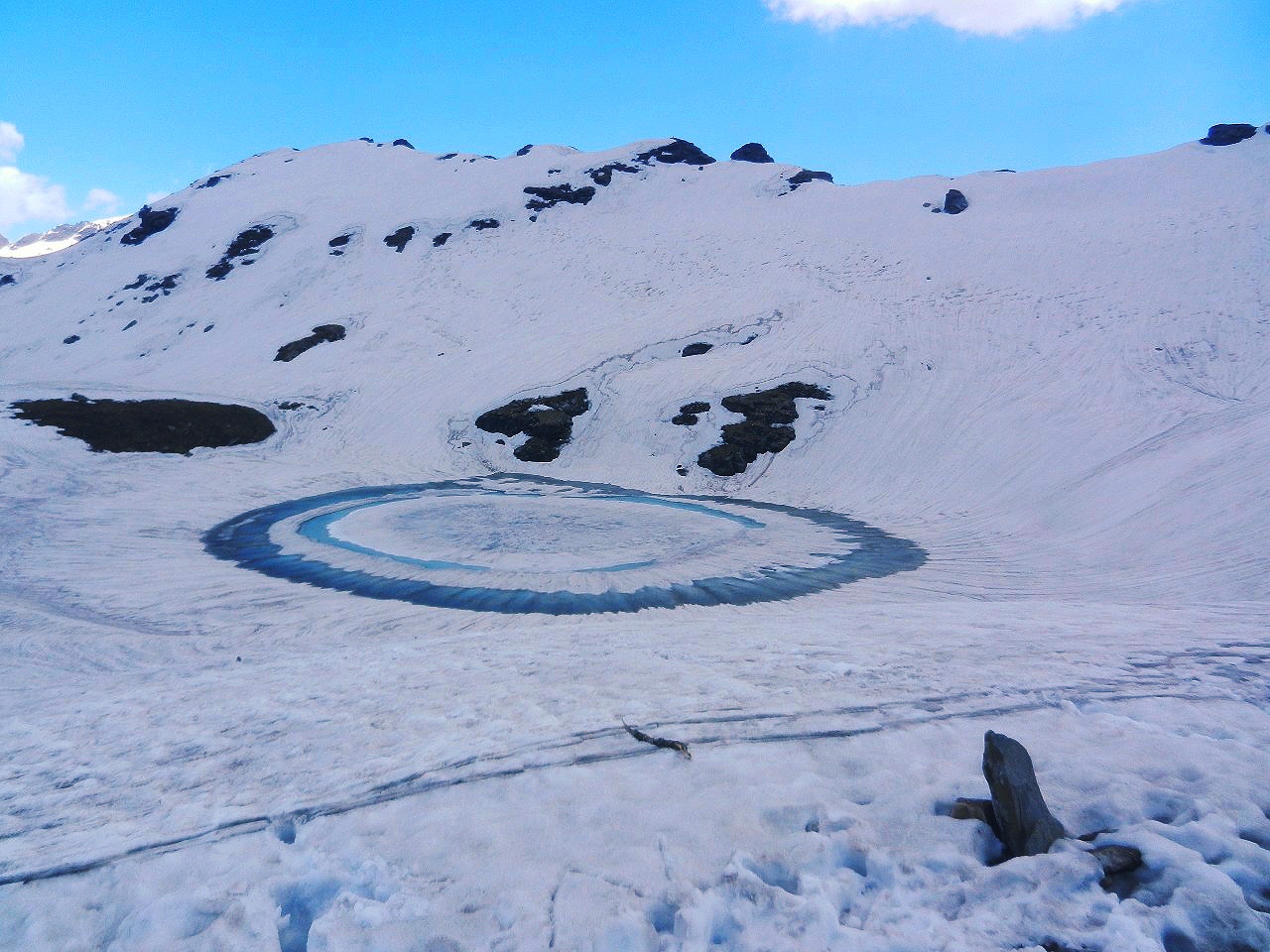
A perfect 3-day weekend escapade in himachal that takes you to the staggering altitude of 14,100 feet in such a short span, Bhrigu Lake Trek attracts beginners and seasoned trekkers alike. The approximate trekking distance of 25 km traverses through beautiful Alpine regions, green-carpeted meadows, splendid campsites, quaint mountain villages and floors you with the view of colossal peaks of Hanuman Tibba and Seven Sisters.
Bhrigu Lake perched at an altitude of 14,100 feet is the star attraction of the trek. The lake remains frozen for most of the year and is rooted deep in mythology. It is believed that Sage Bhrigu meditated on the banks of the holy lake. It is also said that many Rishis and Devtas took their bath in the sacred lake.
3. Hampta Pass Trek

Hampta Pass is the most dramatic crossover trek in the Pir Panjal Range of the Himalayas. With a trekking distance of 35 km, this 5-day trekking extravaganza takes you to an ambitious altitude of 14,039 feet.
The easy to moderate trek captivates you with the most contrasting landscapes that range from vertical rock-walls to expansive grasslands, effervescent streams, silver waterfalls to hanging glaciers to the picturesque campsites and the barren and cold deserts of Lahaul and Spiti. The highlights of the trek are the contrasting sweeps of topography and the crossover trek from the glossy grasslands of Kulu Valley to the beautifully naked Chandra Valley in Lahaul Spiti.
The divinely beautiful Chandra Taal lake is a cherry on the cake of this most sought-after trek from the Manali region. Hindu mythology says that the trek route was traversed by Pandavas on their quest for heaven.
Mid-June to mid-October is the best time to do this trek.
4. Pin Parvati Trek

If you are looking for 11 days of sheer exhilaration, then Pin Parvati trek is your true calling! The imposing altitude of 17,457 feet of Pin Parvati Pass leaves less for imagination.
Reaching the apex point of the trek is the most exhilarating part of this expedition- the pass links the Parvati valley of Kulu to Pin Valley of Spiti. The mesmerizing views of Pin Valley, Shrikhand Mahadev, Kinner Kailash, Bara Shrigiri, Parbati Goat Head peak, Fluted peak, Kulu Makalu floor you with their exuberance.
The 110 km difficult level trek is peppered with a shifting panorama of lush prairie grasslands on one end and a cold barren desert of Spiti region on the other end of the spectrum. Colossal pastures, Buddhist hamlets, freezing glaciers, Hot Springs of Parvati Kund and an assortment of vivid culture-the challenging Pin Parvati trek is certainly not for the feeble-hearted.
According to legends, Lord Shiva was known to have meditated here for years, after which Parvati became delighted and began to flow.
Uncertain rainfall and completely frozen snow mountain make this trek a very tricky one.
June, July and September makes for the best season for undertaking this trek.
5. Chanderkhani Trek

A short yet beautiful trek of 3 days which traverses a distance of 19 kms, Chanderkhani Pass trek brings you to an altitude of 12,000 feet. Nestled amidst the best of Himalayan peaks, the trekking trail journeys along the mammoth Barabangal, Pir Panjal and Parvati Ranges and offers the most splendid view of the Deo Tibba and Hanuman Tibba peaks.
Like most of the treks of the Himalayan region, this trek is deeply influenced by mythology too. It is believed that the local deity of Malana, known by the name Jamlu carried a basket full of Gods and opened it near the pass. A strong wind blew them to the nearby peaks and they settled on these peaks under the strong gush of wind. The peaks get their names after the important Hindu deities who settled there.
The quaint mountain villages of Naggar and Rumsu and Chandrakhani Pass are the star attractions of this trek which remains covered in snow till the end of May.
This moderate level trek is ideal for beginners and best done from mid-May to September, barring July and August.
6. Bara Bhangal Trek
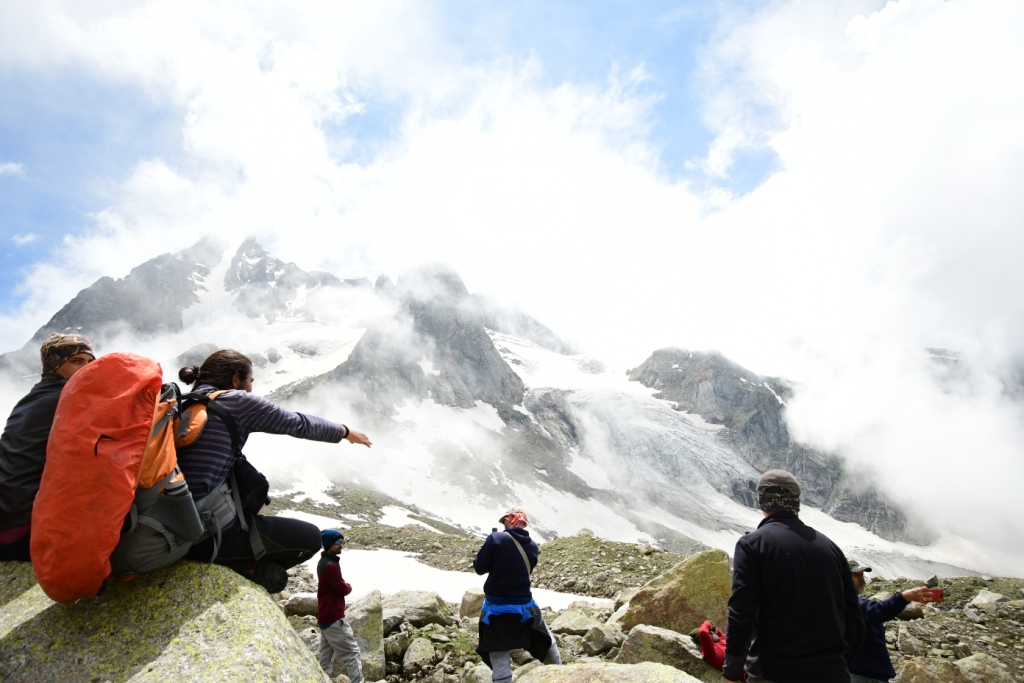
This 11-day, 80 kms, challenging trek that takes you to an elevation of 16,000 feet is certainly not for the beginners. It is touted as one of the toughest treks in Himachal as you explore the rugged backcountry in the most isolated routes.
One journey through expansive pastures, meticulous river crossings, beautiful glacial lakes, stubborn trails, dangerous moraines, and Kalihani and Thamsar Pass amidst the mesmerizing views of Deo Tibba, Mount Indrasen, Hanuman Tibba and the peaks of Bara Shigri glacier.
The lengthy duration and tricky trails improve your trekking experience and take you to the next level.
The village inhabitants of Bara Bhangal themselves believe that they are the descendants of Alexander the Great. Knowing about their mysterious ancestry is certainly one of the high points of this trek.
From the summit the glorified views of the Himalayan mammoths, stretching far beyond the horizon, are the most rewarding package of the trek.
The best time to do the trek is during the months of May to September.
7. Deo Tibba Basecamp Trek
Deo Tibba Basecamp Trek is a 6-day easy trek that touches the altitude of 14,000 feet. The 37 km trekking route journeys along imposing mountains of Deo Tibba, Norbu Peak, Jagatsukh Peak, lush meadows, dangling glaciers, and giant cliffs.
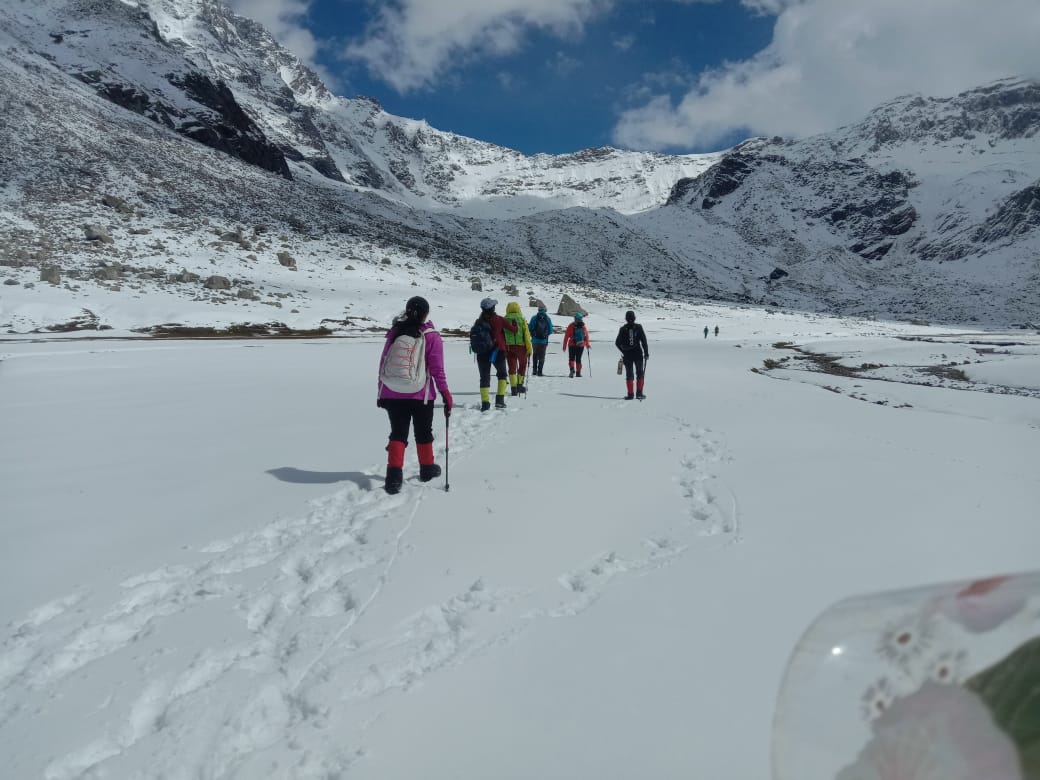
Chota Chandratal, the emerald blue water lake at the foot of Deo Tibba is the star attraction of the trek. You also move along the Bhanara cave which is supposed to be the abode of Pandavas in Mahabharata.
TDescribed as one of the most scenic treks in the Himalayan region, the trek gets its name from Deo Tibba or the “Hill of Gods”. It is believed that the dome-shaped Deo Tibba is the heavenly throne of Lord Indra.
May to October are the best months to undertake this trek.
8. Prashar Lake Trek

Easy to moderate level trek of Prashar Lake covers a distance of 16 km in 2 days to bring you to the altitude of 8,956 feet. This untouched beauty of Himachal Pradesh journeys through thick forests and snow-laden mountains to bring you face to face to the hidden Himalayan gem.
The absolutely stunning Prashar Lake aka Parashar Lake encompassed by the colossal Dhauladhar range is the focal point of the trek. The 3-story pagoda-shaped temple dedicated to Sage Parashar on the banks of the lake is the second main attraction of Prashar Lake trek.
The best months are February, April, May, and September to do the Prashar Lake trek. The trek can even be done in the winter months of December to February if you enjoy the snow.
9. Sar Pass Trek
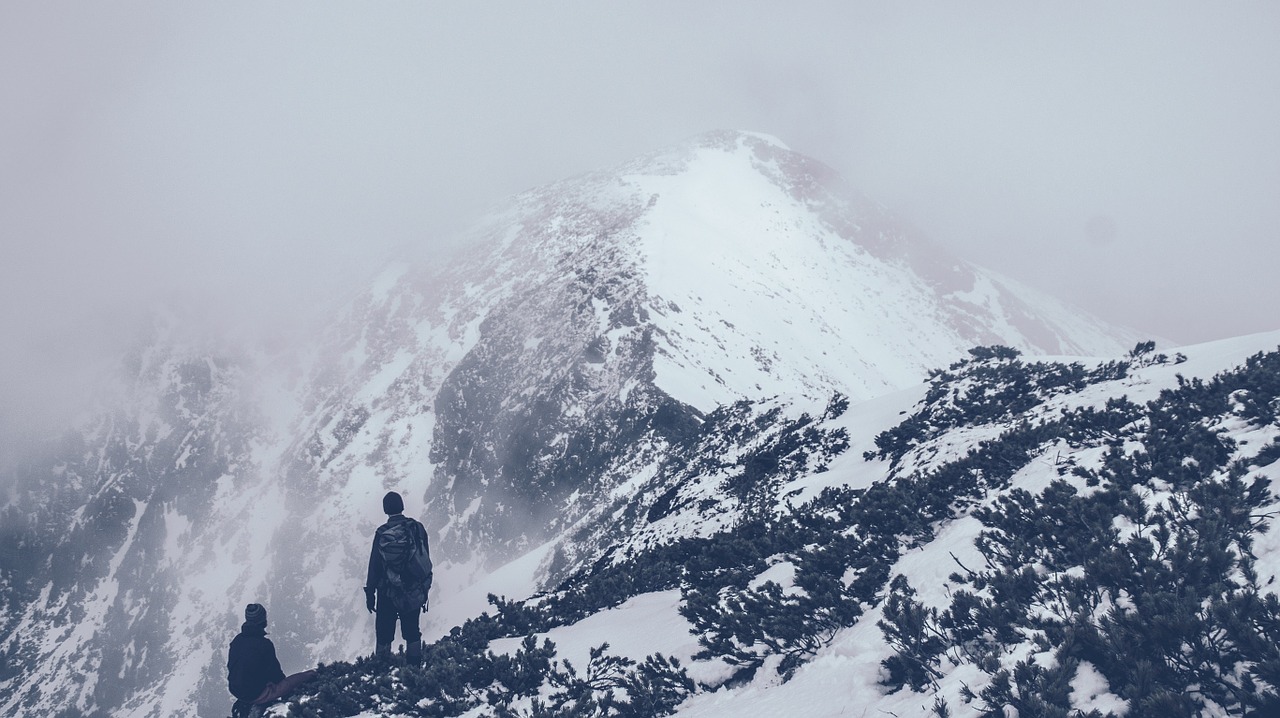
This moderate to difficult trek spans over six days and covers a distance of 48 km to reach the staggering altitude of 13,780 feet. It offers an ideal ground for both amateurs and experienced trekkers even though it can get a bit strenuous for beginners. Sar Pass Trek is a wholesome package that offers myriad meadows, glossy forests, meandering forest trails passing through pretty villages, steep climbs, glacial lakes, bubbling mountain rivers, silver waterfalls, Parvati valley, a skyline of snow-capped mountains, glaciers and an amazing slide-almost everything you can dream of as a trekker.
The highlight of the trek is the Sar Lake, the small frozen lake that the trekkers are treated to while journeying through the trek.
The most exclusive part of Sar Pass trek is the exhilarating descent that cannot be traversed by trekking, given its steep incline. The slope from the pass is the most fun part as you slide down almost 1 km to reach the gentler slope of the valley.
The best time to do the trek is from May to October.
10. Kheerganga Trek

At an elevation of 13,000 feet, Kheerganga is nestled at the extreme end of Parvati Valley. It is the last inhabited village on the trekking route from Pin Valley via Pin-Parvati Pass. This 2-day trek with a short trekking distance of 12 kms is an easy level trek. The mild trekking route makes it an ideal destination for almost everyone.
The trekking route is interspersed with beautiful waterfalls, apple orchards, lush expanses of greenery, Hot water springs, Shiva Temple and offers a perfect journey to discover the beautiful Parvati Valley and its many secrets. The trek route slowly unveils the depth of the magical terrain.
Kheerganga is embedded deep in mythology. It is an important destination for Hindus as well as Sikhs. It is widely believed that Kartikeya, son of Lord Shiva and Parvati meditated at Kheerganga. Goddess Parvati would cook Kheer (rice pudding) in the hot water springs of the region, hence the name Kheerganga.
According to another legend Guru Nanakji while visiting his disciple in this region removed a giant stone and this is where the Hot Springs appeared.
These springs are undoubtedly the most popular part of the Kasol Kheerganga trek. The most amazing highlight of this trek is the rare experience as you take a dip in the hot water springs encompassed by the frosty snow-covered surroundings.
May to June and September to October are the best time to undertake the Kheerganga trek.





